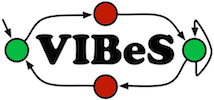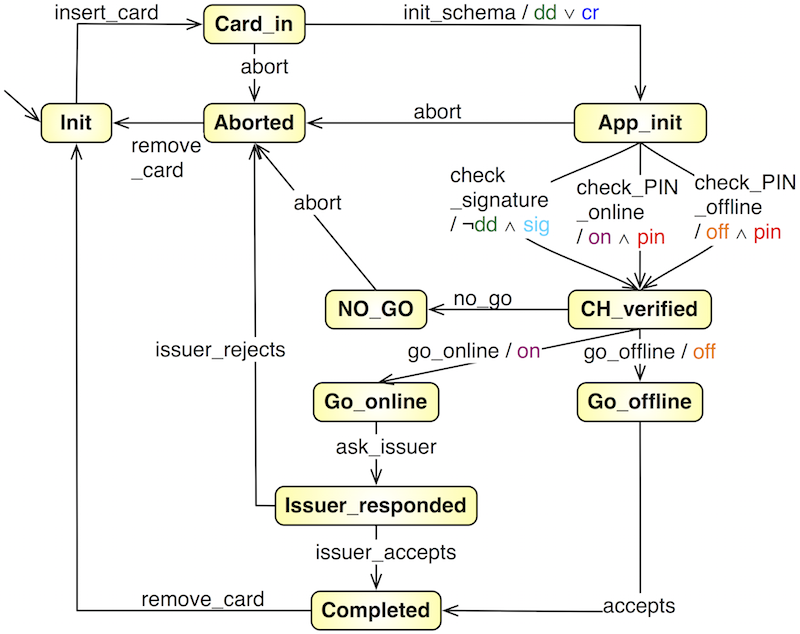

The card payement terminal case study has been defined by a software engineer based on EMV and PCI norms.
One terminal (one product) accepts card payment with a certain payment schema (direct debit and/or credit card), using a card owner authentication method (signature and optionally PIN code), and with a synchronous (on-line) or asynchronous (off-line) connection to the payment service.

The feature diagram in TVL format (see TVL) may be downloaded here: cpterminal.tvl
The feature diagram in SPLOT format (see SPLOT) may be downloaded here: cpterminal.splot.xml
The FTS starts in the initial (Init) state where the card holder has to insert his card. The terminal will select a means of payment (e.g., Visa, Mastercard, American Express, etc.) and negotiate with the card chip to agree on a protocol for the transaction. Transactions can be either performed on-line or off-line using a PIN code or a signature. Once the card holder has been identified, the terminal will perform the transaction off-line or on-line (and in this case, it will contact the card issuer to authorize the transaction) and update the information on the card chip. Once the transaction has been completed (or aborted), the card holder may remove her card from the CPT.

The model may be downloaded here: cpterminal.fts